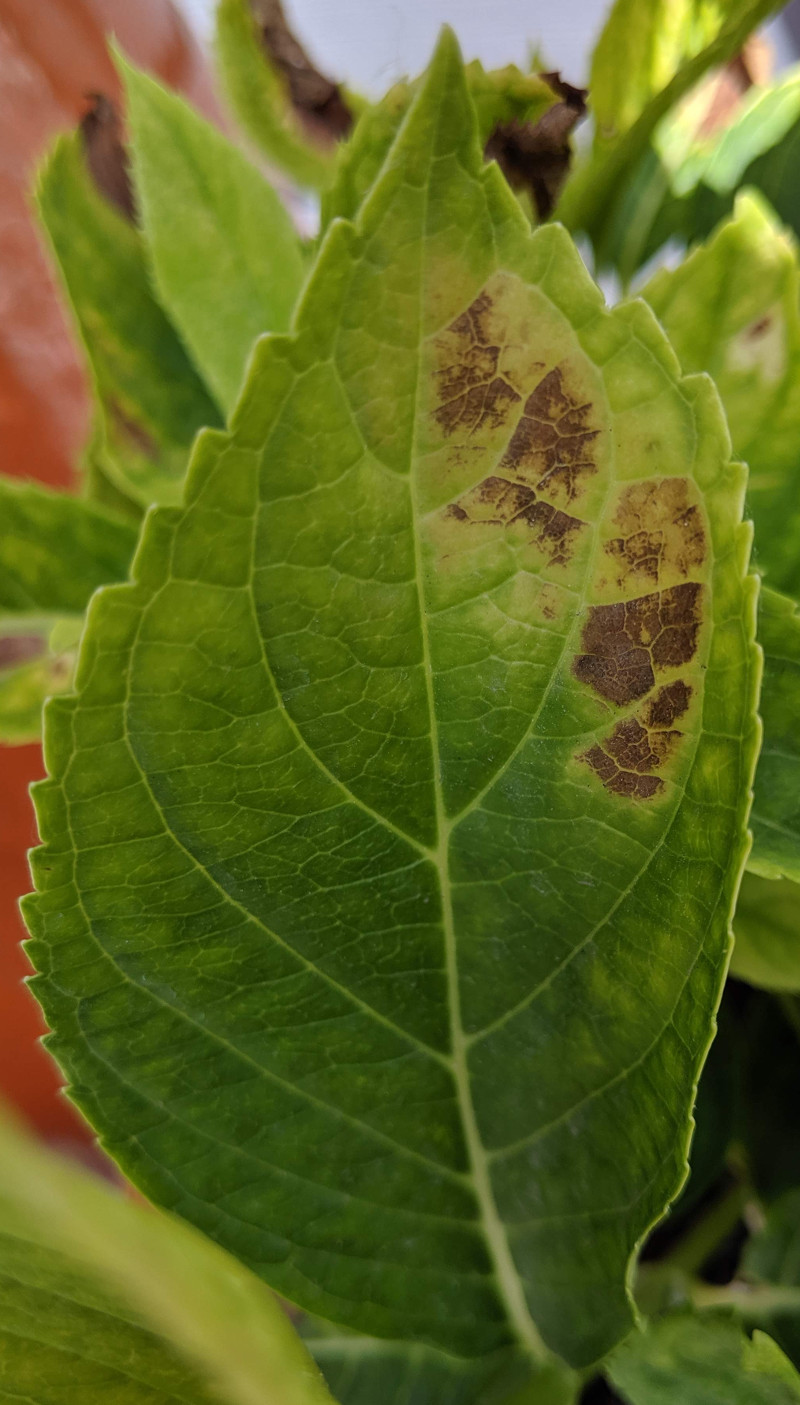The 6-Second Trick For Hydrangea Leaves Turning Yellow
Wiki Article
Some Ideas on Hydrangea Leaves Turning Yellow You Need To Know
Table of ContentsThe 9-Second Trick For Hydrangea Leaves Turning YellowThings about Hydrangea Leaves Turning YellowGetting My Hydrangea Leaves Turning Yellow To WorkNot known Facts About Hydrangea Leaves Turning Yellow
One possibility is that the plant is not getting enough sunshine. Throughout the cold weather, the days are much shorter, and the sunlight is not as extreme, so ensure to put your Hydrangea in an area where it will access the very least 6 hours of sunshine every day. One more reason for Hydrangea yellow fallen leaves in winter can be excessive water.Ultimately, the fallen leaves may be turning yellow due to temperature level stress and anxiety. Hydrangeas like cooler temperature levels, so if the plant remains in a place that gets also warm or as well cold, the leaves will certainly turn yellow. If you think temperature level stress and anxiety may be the problem, try relocating your Hydrangea to a different area or shielding it from the aspects with a burlap cover.
New growth will certainly be observed in early spring, when you'll see green vegetation growing from stems that could have appeared dead. However, if your fallen leaves are turning brownish in spring or summer season, there are likely various other aspects at play. The precise factors depend upon the variety and their expanding problems, however generally, brown hydrangea fallen leaves are a sign of dehydration and wilting in the warm
In the springtime when the mercury stays reasonably low, they'll do great. When points heat up over the summertime nonetheless, time invested in the early mid-day rays can cause unknown damage.: Grow your hydrangeas in an area where they'll obtain sunshine in the early mornings or evenings, yet not during the peak hours.
Things about Hydrangea Leaves Turning Yellow
Wilting is brought on by absence of moisture, meaning there are a few good techniques to utilize to avoid this from taking place. Offer your hydrangeas a healthy glug of water every few days when the temperatures are climbing up high, and deal with the dirt to better maintain moisture. After watering, a bit of compost around the base of each plant should assist with this by keeping moisture in the soil.This disrupts fungi spores from working out. "The Botrytis fungus flourishes in amazing and wet conditions, so avoid showering the entire plant when sprinkling and simply water at the roots," shares Roy Nicol, a Master Horticulturist - Hydrangea Leaves Turning Yellow. If you've missed out on the possibility for avoidance and are taking care of an infection you ought to remove all dead or significantly infected leaves from the plant and damage them to stop additional spread
As a basic regulation of thumb, we recommend removing leaves when they are 50% brown or greater. While browning triggered by any kind of factor can not be turned around, taking the restorative action described above will encourage the plant to expand brand-new fallen leaves so the harmed leaves either fall off naturally or can be removed by the garden enthusiast.
Hydrangeas must be watered just when the top few inches of dirt are dry, and should be offered a complete soaking each time. Underwatered hydrangeas are most likely useful source to have yellow, wilting, and sagging fallen leaves.
Not known Facts About Hydrangea Leaves Turning Yellow
The method you fix hydrangea leaves turning yellow depends on the crucial problem triggering the yellow leaves. This can be hard to figure out, once you do you will have the ability to adjust your plant care as necessary to care for the problem. As stated before, a common problem with hydrangeas is vitamins and mineral deficiencies.During the height expanding period, you should water at a rate of regarding 1 inch weekly. If you are fretted about not appropriately sprinkling your hydrangeas, there are a number of points you check that can do. Including compost to the base of the plants over the root zone help to control the temperature around the bush and preserve water in the dirt.

If it is as well extreme, some plants will never recover from transplant shock and will certainly remain to decrease till they pass away. Reduce transplant shock by including as lots of roots as possible when digging up your plant to relocate it. Be sure to offer even more water than normal in the weeks adhering to planting to help your plant recover and grow new roots.
The Best Strategy To Use For Hydrangea Leaves Turning Yellow
To avoid spreading out fungal conditions, be certain to thouroughly clean and disinfect any type of pruning tools prior to and after usage. You can try to purge the origins with water visit their website to eliminate excess fertlizer.
If you don't water your hydrangea plant for even more than a week, the leaves will certainly start transforming yellow. Fungal illness that attack the plants have a tendency to reveal signs on the roots and the leaves of the plant.
Root rot takes place when virus use up the origin cells as hosts and stop the cell from functioning. If not dealt with, this illness can eventually cause the plant dying. Fallen leave spot is an additional fungal illness that can target hydrangea. It causes the leaves transforming yellow and the appearance of brownish and purple spots on the fallen leaves.
Report this wiki page